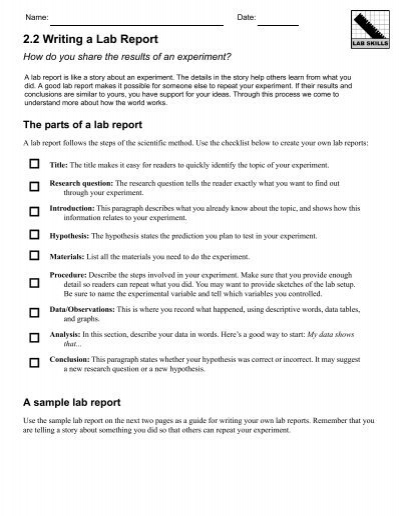A lab report is a document that describes the processes, observations, and results of an experiment. It is an important tool for communicating the results of scientific research and is often required as part of a class or research project. In a lab report, it is important to clearly and accurately list all the materials used in the experiment. This helps to provide a clear and complete record of the experiment and allows others to replicate the experiment if necessary.
There are a few key considerations when it comes to listing materials in a lab report. First and foremost, it is important to be thorough and include all materials used in the experiment, no matter how small or insignificant they may seem. This includes any chemicals, equipment, or other materials used during the experiment. It is also a good idea to include the manufacturer and model number of any equipment used, as this can be helpful for others who may be trying to replicate the experiment.
In addition to being thorough, it is also important to be organized when listing materials in a lab report. One way to do this is to create a materials list, which is a separate section in the lab report that lists all the materials used in the experiment. This list should be organized alphabetically or by category, depending on which method makes the most sense for your experiment. For example, you could organize the list alphabetically by the names of the materials, or you could group the materials by category (e.g., chemicals, equipment, etc.).
When listing materials in a lab report, it is also important to be precise and provide as much detail as possible. This includes providing the exact quantities of materials used, as well as any specific preparations that were made (e.g., diluting a chemical to a certain concentration). It is also a good idea to include any relevant safety precautions or warnings associated with the materials, as this can be important for others who may be working with the materials in the future.
Overall, listing materials in a lab report is an important part of accurately and effectively communicating the results of an experiment. By being thorough, organized, and precise, you can help ensure that others can easily understand and replicate your experiment if necessary.




